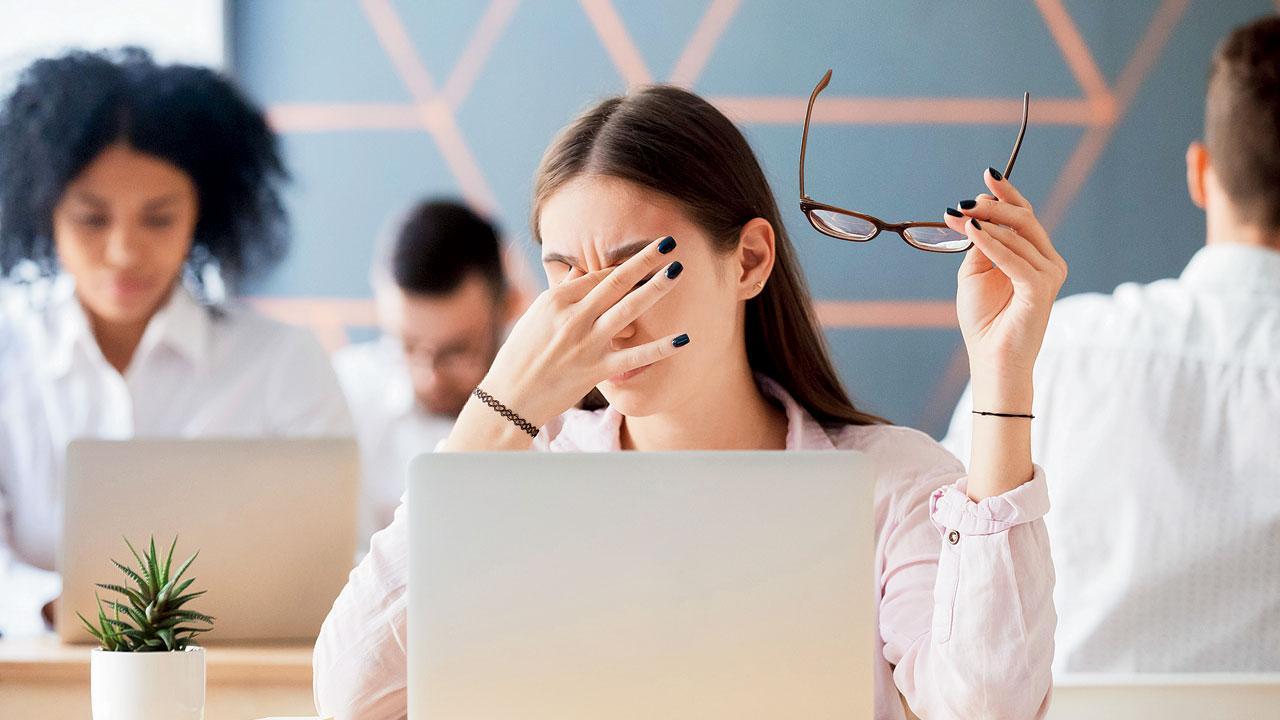The importance of taking regular screen breaks, as emphasised by the Archewell website, has become more pronounced during the pandemic

Extended screen time can affect eye health and disrupt the sleep cycle
One of the unfortunate side-effects of the increased hours we’ve been spending indoors for more than a year now is increased screen time. A March 2021 study found a 76 per cent increase in screen time during the pandemic, with most of this additional time being spent on recreational usage. This, experts say, can affect your health in several ways, from causing eye fatigue and dryness to impacting your sleep cycles. On their Archewell website, the Duke and Duchess of Sussex (Prince Harry and Meghan Markle) are advising visitors to take screen breaks every 20 minutes, with an automated reminder popping up at regular intervals.
ADVERTISEMENT
Change it up
“While it can be difficult to cut down on your work-related screen time, what you can change is the amount of time you dedicate to recreational activities that involve your phone, laptop or television screens. It’s also advisable to use a larger screen [a television screen or laptop] as opposed to a mobile phone to reduce the strain on your eyes. This is especially helpful for children who are taking classes online,” explains Dr Hasanain Shikari, an ophthalmologist and eye surgeon at Masina Hospital. He also points out that while exposure to a digital screen for extended hours does not necessarily induce myopia or hypermetropia, it can bring to the fore refractive errors that already exist but were hitherto unnoticed. To address these, he recommends get a routine eye check-up every six months.

Duke and Duchess of Sussex, Meghan and Harry’s website has reminders for visitors to take screen breaks. Pic/Getty Images
The right environment
It’s also important to ensure that your room is well lit and with the light source above you, so that it does not cast a shadow on your screen. Use your screen’s auto-brightness feature so that it isn’t too bright or dark. “Computer vision syndrome, also referred to as digital eye strain, is a group of eye and vision-related problems resulting from screen use. The symptoms include eye strain, headaches, blurred vision and dry eyes. For the dryness, I advise people to make a conscious effort to blink more often — when you are staring at a screen, your natural blink rate goes down and this can dry your eyes out,” he adds.
Rule of 20s
Echoing the Archewell website’s advice, he suggests what ophthalmologists call the 20-20-20 rule. This involves taking a 20-second break, every 20 minutes, to look at something that’s 20 feet away. “When you focus your vision on the far end of the room or outside the window, for instance, you break the spasm of your eye muscles that are constantly looking at a screen that’s close to you. This can alleviate strain,” he explains. For those who spend extended hours in air-conditioned environments, he suggests using artificial teardrops or washing your eyes with cold, clean water to keep them moisturised.

Hasanain Shikari
And finally, although protective lenses that claim to filter out blue light are being marketed extensively, Dr Shikari advises against them. “Today, modern computers and phone screens already come with filters built into them, which protect your eyes from blue light emissions. If you don’t already use prescription spectacles, I would not recommend wearing zero-power, blue light-blocking lenses while using digital screens,” he concludes.
Yogic intervention
Namita Piparaiya, a yoga and Ayurveda lifestyle specialist at Yoganama suggests these exercises to help relieve eye fatigue.
>> Palming: This is a foundational practice that you can begin and end your eye exercises routine with. Rub your palms together vigorously to generate heat, and then gently cup your eyes by creating a hollow with your palms. Relax your forehead and eyes and enjoy the warmth and relaxation for a few breaths. When you’re ready to open your eyes, do so by blinking a few times and looking directly at your palms. This exercise relaxes and revitalises the muscles around your eyes.
>> Sideways viewing: Gently turn your gaze sideways to one side and then to the other. Be fully aware of everything you observe as you shift your vision. This relaxes the muscles that become tense due to constant reading or looking at small text that is very close to you.
>> Rotational viewing: Move your gaze through its entire range of motion, both clockwise and then anti-clockwise. This helps to balance all the muscles that surround your eyes.
 Subscribe today by clicking the link and stay updated with the latest news!" Click here!
Subscribe today by clicking the link and stay updated with the latest news!" Click here!







